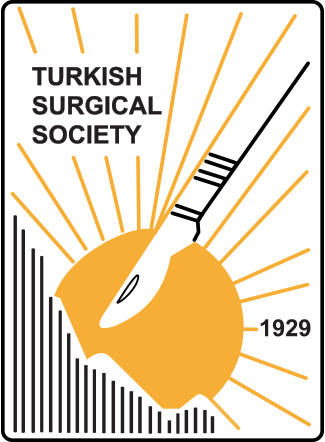Abstract
Purpose: Oxygen radicals which are produced during reperfusion phase play a central role for hepatocellular damage during ischemia/reperfusion (I/R) injury. Antioxidant strategies appear a promising approach to prevent I/R injury. In the present study, the effect of glutathione (GSH) preconditioning established by whey protein feeding on hepatocellular injury markers was assessed in a rat hepatic normothermic I/R injury model. The interaction between intracellular GSH content and heme oxygenase-1 (HO-1) enzyme expression was also determined in order to understand the level of upgrading of HO-1 system in a high GSH content environment after preconditioning.
Material and Methods: Livers of female Sprague-Dawley rats were subjected to 45/45 minutes of normothermic I/R injury. A group of rats were fed by standard chow for a three week duration before I/R procedure (CONTROL I/R; n=16), whereas another group was fed by “whey” protein for preconditioning (WHPR I/R; n=16) during the same period. Two SHAM groups were constituted accordingly but rats were not subjected to I/R injury (STD SHAM and WHEY SHAM; n=6 in each). Following 45 minutes of reperfusion, serum transaminase levels as well as GSH, malondialdehyde (MDA) levels, apoptotic index (AI) and HO-1 gene expression in liver tissue were determined. Half of the animals in both injury groups were surveilled for a week without sampling.
Results: Intracellular GSH levels in WHEY SHAM group were significantly higher than those of STD SHAM group which indicated a successful preconditioning. Preconditioning by “whey” protein feeding prior to I/R injury (WHPR I/R) significantly ameliorated the increased levels of serum transaminase as well as liver MDA levels and Aİ in CONTROL I/R group. Survival of the rats in both injury groups were not different. “Whey” preconditioning also significantly increased GSH levels, whereas HO-1 expression was lower when compared to rats subjected to I/R injury without preconditioning.
Conclusion: Feeding with “whey” protein successfully resulted high GSH content in rat liver. Whey preconditioning ameliorated hepatic I/R injury. HO-1 enzyme seems to have a less important role in antioxidant defense system when GSH production was induced prior to I/R injury.
Keywords:
Liver, ischemia/reperfusion, whey, glutathione, heme oxygenase-1
References
1Lentsch AB, Kato A, Yoshidome H et al. Inflammatory mechanism and therapeutic strategies for warm hepatic ischemia/reperfusion injury. Hepatology 2000;32:169-173.
2Jaeschke H. Molecular mechanism of hepatic ischemia-reperfusion injury and preconditioning. Am J Physiol Gastrointest Liver Physiol 2003;284:G15-G26.
3Sies H. Oxidative stress: from basic research to clinical application. Am J Med 1991, 91 (suppl 3c): 31S-38S.
4Bounaus G, Batist G, Gold P. The immunoenhancing property of dietary whey protein: role of glutathione. Clin Invest Med 1989;12:154-161.
5Öğünç AV, Manukyan NM, Cingi A ve ark. Süt serum proteinleri ile beslenmenin sıçanlarda yara yeri iyleşmesine etkisi. Kocatepe Tıp Der 2004;5:51-54.
6Middleton N, Reid JR, Coolbear T et al. Proliferation and intracellular glutathione in Jurkat T cells with concentrated whey protein products. Int Dairy J 2003;13: 567-573.
7Zuckerbraun BS, Biliar TR. Heme oxgenase-1. A cellular hercules. Hepatology 2003;37:742-743.
8Schauer RJ, Gerbes AL, Vonier D, et al. Glutathione protects the rat liver against reperfusion injury after prolonged warm ischemia. Ann Surg 2004;239:220-231.
9Haklar G, Yüksel M, Yalçın AS. Chemiluminescence in the measurement of free radicals: theory and application on a tissue injury model. Marmara Med J 1998;11:56-60.
10Yalçın AS, Haklar G, Küçükkaya B ve ark. Chemiluminescence measurement for the detection of free radical species. In: Özben T, ed. Free Radicals, Oxidative Stress, and Antioxidants. Plenum Press, New York, pp. 385-390, 1998.
11Choi BM, Kim YM, Jeong YR, et al. Induction of heme oxygenase-1 is involved in antiproliferative effects of paclitaxel on rat vascular smooth muscle cells. Biochem Biophys Res Commun 2004;321:132-137.
12Jaeschke H, Bautista AP, Spolarics Z et al. Superoxide generation by neutrophils and Kupffer cells during in vivo reperfusion after hepatic ischemia in rats. J Leukoc Biol 1992;52:377-382.
13Renehan AG, Booth C, Potten CS. What is apoptosis and why is it important? BMJ 2001;322:1536-1538.
14Rozga J. Animal models of liver regeneration Ed: Souba WW, Wilmore DW, Surgical Research. pp. 703-708, USA, 2001.
15Glantzounis GK, Yang W, Koti RS et al. Continuous infusion of N-acetylcysteine reduces liver warm ischemia-reperfusion injury. Br J Surg 2004;91:1330-1339.
16Andre M, Felley-Bosco E. Heme oxygenase-1 induction by endogenous nitric oxide: influnce of intracellular glutathione. FEBS Letters 2003;546:223-227.
17Horikawa S, Yoneya R, Nagashima Y et al. Prior induction of heme oxygenase-1 with glutathione depletor ameliorates the renal ischemia and reperfusion injury in the rat. FEBS Letters 2002;510:221-224.
18Bulger EM, Garcia I, Maier RV. Induction of heme-oxygenase 1 inhibits endothelial cell activation by endotoxin and oxidant stress. Surgery 2003;134:146-152.
19McCarter SD, Akyea TG, Lu X, et al. Endogenous heme oxygenase induction is a critical mechanism attenuating apoptosis and restoring microvascular perfusion following limb ischemia/reperfusion. Surgery 2004;36:67-75.
20Kim YH, Lee SM. Role of Kupffer cells via the vasoregulatory gene expression during hepatic ischemia/repefusion. Arch Pharma Res 2004;27:111-117.



